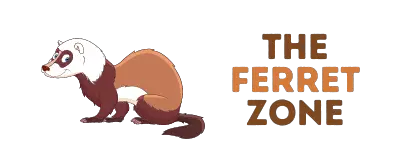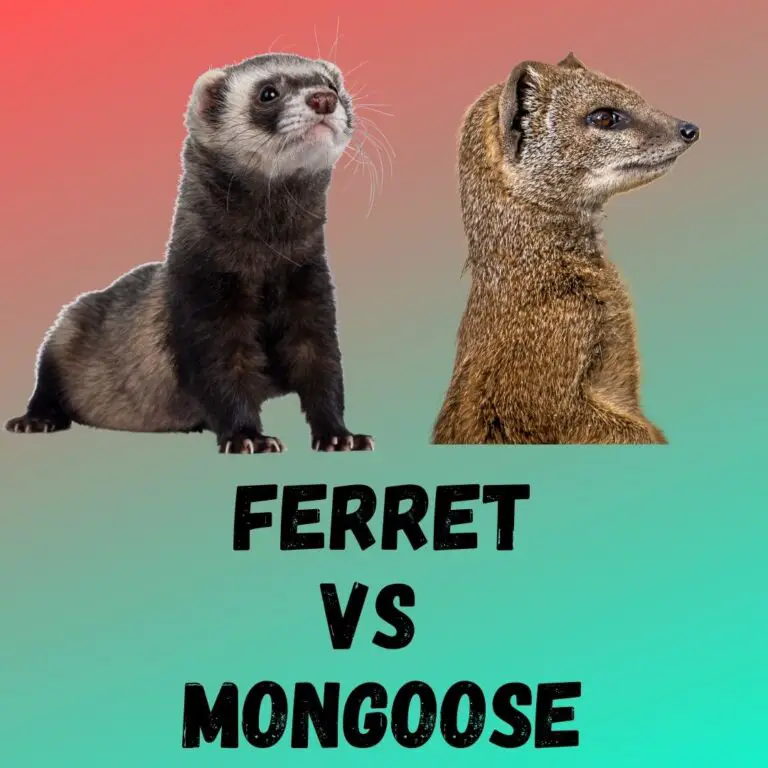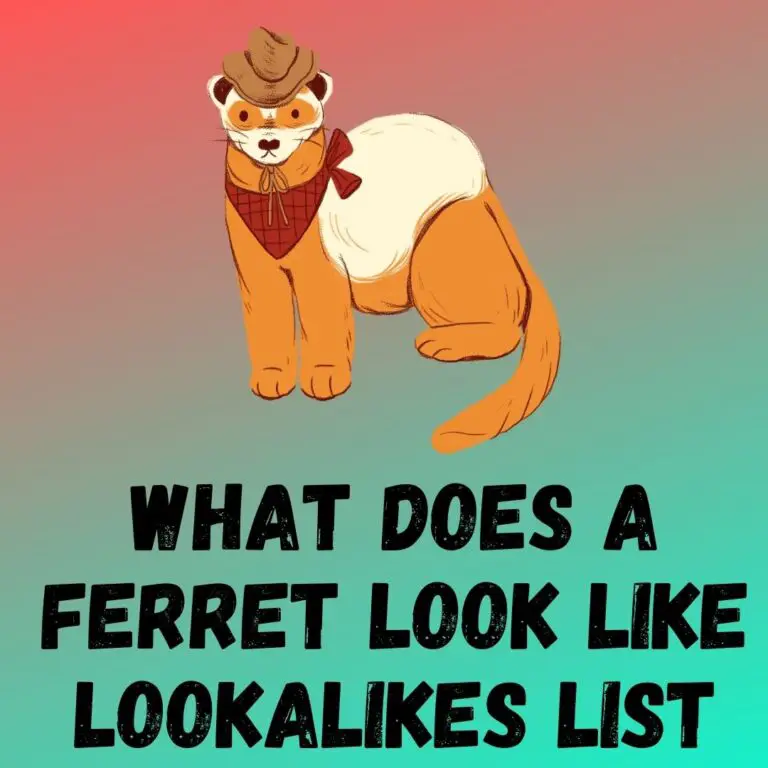
Ferret Vs Polecat: Understanding the Differences
Have you ever wondered about the differences between ferrets and polecats? As an experienced ferret enthusiast, I can tell you that these two animals may seem similar at first glance, but they actually have distinct characteristics that set them apart. In this article, I’ll delve into the fascinating world of ferrets and polecats, exploring their physical features, behavior, and domestication history. By the end, you’ll have a clearer understanding of these captivating creatures and be able to appreciate their unique qualities. So, let’s dive in and unravel the mysteries of the ferret vs polecat debate!
Physical Features of Ferrets
Ferrets have some unique physical features that distinguish them from polecats. Let’s explore these characteristics in more detail:
- Size and Appearance: Ferrets are small, slender-bodied mammals with an average length of about 20 inches (51 cm) including their tail. They have a long, tubular-shaped body and short legs. The fur of a ferret is typically short and comes in a variety of colors and patterns, including albino, sable, and silver.
- Head and Facial Features: Ferrets have a distinctive head shape, with a slightly rounded skull and a pointed snout. Their small, oval-shaped eyes are usually dark in color. One notable feature of a ferret’s face is its whiskers, which help them navigate their surroundings.
- Ears: Ferrets have highly responsive ears that are triangular in shape and stand upright on their heads. These keen ears allow ferrets to hear even the faintest sounds, making them excellent hunters.
- Teeth: Ferrets have sharp, carnivorous teeth adapted for tearing meat. Their teeth are designed for tackling small prey and are different from the teeth of herbivorous animals.
- Scent Glands: Like polecats, ferrets have scent glands located near their anus. These glands produce a musky odor that can be used for communication and marking territory.
It’s important to note that ferrets and polecats share some physical characteristics, such as their body shape and fur color. However, there are unique traits that set ferrets apart, such as their smaller size and domestication history.
Overall, understanding the physical features of ferrets can give us further insight into their biology and help distinguish them from polecats. So, let’s now move on to explore the behavior of ferrets in the next section.
Physical Features of Polecats
Polecats, like their close relatives the ferrets, have distinct physical characteristics that set them apart from other animals. Understanding these features can help us further appreciate the biology of polecats. Here are some key physical features of polecats:
1. Size and Appearance
- Polecats are medium-sized carnivores, measuring about 13 to 18 inches in length, excluding their tail.
- They have a sleek and slender body, well-suited for their agile movements and hunting abilities.
- Polecats come in a range of colors, including variations of brown, black, and white, with a masked face and a dark-tipped tail.
2. Head and Facial Features
- Polecats have a triangular-shaped head, with a pointed snout.
- They possess sharp, predatory eyes that are adapted for nocturnal hunting.
- Their facial markings, such as the facial mask and the coloration around their eyes, give them a distinctive appearance.
3. Ears
- Polecats have small, rounded ears that are covered in short fur.
- These ears are highly mobile, allowing them to detect sounds from various directions and aid in their hunting and survival.
4. Teeth
- Polecats have sharp, carnivorous teeth, including prominent canines and sharp molars, necessary for capturing and consuming their prey.
- The dental structure of polecats is similar to that of ferrets, reflecting their shared evolutionary history.
- Like ferrets, polecats possess scent glands, located near their anus, which they use for marking territories and communicating with other polecats.
- The scent produced by these glands is pungent and helps polecats establish their presence in the environment.
By understanding the physical features of polecats, we can gain insight into their adaptation to their natural habitat and their role in the ecosystem. These features also provide a basis for comparing and contrasting them with their domesticated counterparts, ferrets. Next, we will delve into the behavior of polecats in order to gain a more holistic understanding of these fascinating creatures.
Behavior of Ferrets
Ferrets, as domesticated animals, have unique and interesting behaviors. Understanding their behavior is crucial for providing them with appropriate care and ensuring their well-being. Here are some key points about the behavior of ferrets:
- Playful and Energetic: Ferrets are known for their playful and high-energy nature. They love to explore their surroundings, play with toys, and engage in interactive activities. This active behavior is consistent with their natural instinct as predators in the wild.
- Social Animals: Ferrets are social creatures that thrive on social interactions. They enjoy the company of other ferrets and can form close bonds with their human caregivers. It’s recommended to keep ferrets in pairs or small groups to fulfill their social needs.
- Climbing and Burrowing: Ferrets have a natural inclination for climbing and burrowing. They are skilled climbers and can navigate various obstacles with ease. Providing them with opportunities to climb and explore can help fulfill their natural instincts.
- Sleeping Habits: Ferrets are crepuscular animals, which means they are most active during dawn and dusk. They spend a significant amount of their time sleeping, usually around 14 to 18 hours per day. It’s essential to provide them with a cozy and safe sleeping area.
- Scent Marking: Like polecats, ferrets have scent glands that they use for marking their territory. They may rub against objects or drag their bodies on the ground to leave their scent. This behavior is a natural way for them to communicate with other ferrets and assert their presence.
- Predatory Instincts: Ferrets have strong predatory instincts due to their ancestral relationship with polecats. While domesticated ferrets do not need to hunt for food, some may still exhibit hunting behaviors, such as stalking and pouncing on toys.
Understanding the behavior of ferrets allows us to create a suitable environment that meets their physical and mental needs. Providing them with plenty of mental stimulation, social interaction, and opportunities for play and exploration contributes to their overall well-being.
Keep reading to discover more about the behavior of polecats and how it compares to ferrets.
Behavior of Polecats
Polecats, much like their domesticated counterparts, ferrets, have unique behaviors that contribute to their survival in the wild. Understanding the behavior of polecats is crucial in appreciating their role in the ecosystem and comparing it to that of ferrets.
1. Solitary Lifestyle: Polecats are primarily solitary animals, preferring to live and hunt alone. They establish and defend their territories, marking them with scent to communicate with other polecats. This behavior helps them minimize competition for resources and increase their chances of survival.
2. Nocturnal Hunters: Polecats are nocturnal creatures, which means they are most active during the night. Their keen senses, particularly their excellent night vision, help them navigate in the dark and locate their prey with precision. This behavior allows them to avoid potential predators and maximize their hunting success.
3. Powerful Predators: Polecats possess strong predatory instincts and are skilled hunters. They mainly feed on small mammals, birds, reptiles, and occasionally, amphibians and insects. Their ability to stalk, pounce, and capture their prey efficiently showcases their remarkable hunting skills.
4. Art of Climbing and Burrowing: Polecats are agile climbers and skilled burrowers. They can easily scale trees, rocks, and other vertical structures, aiding in their pursuit of prey or escaping from predators. Burrowing helps them create sheltered dens for protection and nesting.
5. Territorial Marking: Polecats utilize scent marking to establish and maintain their territories. They have specialized scent glands that release a distinct and pungent odor, which serves as a warning to potential intruders to stay away. This behavior is crucial in defending their resources and ensuring their own survival.
6. Adaptability: Polecats display remarkable adaptability to various environments. They can thrive in diverse habitats, including forests, grasslands, wetlands, and sometimes even in urban areas. This adaptability further contributes to their survival and ability to cope with changing conditions.
Understanding the behavior of polecats allows us to appreciate their unique nature and the important role they play in maintaining the balance of ecosystems. Comparing their behavior to that of ferrets helps highlight the adaptations each species has developed due to their different living conditions. In the upcoming section, we will explore the behavior of ferrets and draw comparisons between these two fascinating animals.
Domestication History of Ferrets
The domestication history of ferrets is an intriguing tale that dates back thousands of years. My research reveals that ferrets were first domesticated in Europe for hunting purposes. Ancient civilizations, such as the Egyptians and the Greeks, recognized the remarkable hunting abilities of these small carnivores and valued them as skilled rodent catchers.
- Ferrets were used for rabbit hunting. In medieval Europe, ferrets became an indispensable tool for catching rabbits in warrens. Their slim bodies and agility allowed them to chase rabbits into their burrows, making it easier for humans to capture the prey.
- Selective breeding played a crucial role. Over time, humans selectively bred ferrets to enhance their desired traits, such as size, coat color, and temperament. This selective breeding resulted in the development of various domestic ferret breeds that we see today.
- The “Ferreting” tradition. Ferreting, the practice of using ferrets to hunt rabbits, was a popular pastime in many European countries for centuries. It was considered both a sporting activity and a means of pest control.
- Ferrets as working animals. Apart from their hunting prowess, ferrets were also employed for rodent control in farms, warehouses, and even on ships. Their ability to fit into tight spaces and their exceptional sense of smell made them efficient at locating and eliminating vermin.
- The rise of ferrets as beloved pets. While they have a long history as working animals, ferrets have also captured the hearts of many as beloved pets. Their playful and mischievous nature, along with their social demeanor, make them popular companions in households worldwide.
Understanding the domestication history of ferrets allows us to appreciate the bond between humans and these remarkable creatures. Ferrets have come a long way from their wild ancestors, the polecats, and have evolved to become an integral part of our lives. Comparing their domestication history to the untamed nature of polecats provides valuable insights into how each species has adapted to their respective lifestyles. So, let’s dive deeper into the behavior and lifestyle of these fascinating creatures in the following sections.
Domestication History of Polecats
The domestication history of polecats dates back thousands of years. In fact, polecats were one of the first animals to be domesticated in Europe. Humans initially began domesticating polecats for their hunting abilities, specifically for hunting rabbits.
As natural-born hunters, polecats were prized for their agility, speed, and keen sense of smell. They were highly effective in flushing out rabbits from their burrows, making them an asset for hunters. Over time, humans saw the potential in selectively breeding polecats to enhance their desirable traits, such as size, coat color, and temperament.
Through careful breeding programs, various domestic ferret breeds emerged. These breeds exhibited a range of characteristics, including different coat colors and patterns, as well as variations in size and temperament. For example, some ferret breeds were specifically bred for their small size and ability to squeeze into tight spaces, making them ideal for vermin control in homes and barns.
As the domestication process continued, ferrets were not only used for hunting purposes but also became popular for rodent control. Their natural hunting instincts and agility made them excellent at catching and eliminating rodents, helping to protect crops and livestock.
Furthermore, ferrets’ playful and social nature made them endearing companions and eventually led to their widespread popularity as pets. Today, ferrets are kept as pets in many households around the world, cherished for their energetic personalities and their ability to form strong bonds with their human caregivers.
Understanding the domestication history of polecats allows us to appreciate the special bond that has formed between humans and these creatures. It also provides us with insights into how both species have adapted to their respective lifestyles over thousands of years, showcasing the remarkable resilience and adaptability of both polecats and domestic ferrets.
Conclusion
Understanding the physical features and behavior of ferrets and polecats provides valuable insights into these fascinating creatures. Their distinct characteristics, such as size, appearance, hunting abilities, and adaptability, have allowed them to thrive in various environments.
Polecats, with their solitary nature and nocturnal habits, have evolved to become skilled hunters, utilizing their agility and burrowing skills to pursue prey and avoid predators. Their domestication history showcases the close bond between humans and these animals, as polecats were one of the first animals to be domesticated in Europe for their hunting abilities.
Ferrets, on the other hand, have been selectively bred from polecats for thousands of years, resulting in various domestic breeds. These playful and social animals have become popular pets, cherished for their companionship and rodent control abilities.
By understanding the physical and behavioral traits of ferrets and polecats, we gain a deeper appreciation for their role in the ecosystem and the unique bond they share with humans. Whether as wild creatures or beloved pets, both ferrets and polecats continue to captivate us with their remarkable adaptability and charm.






